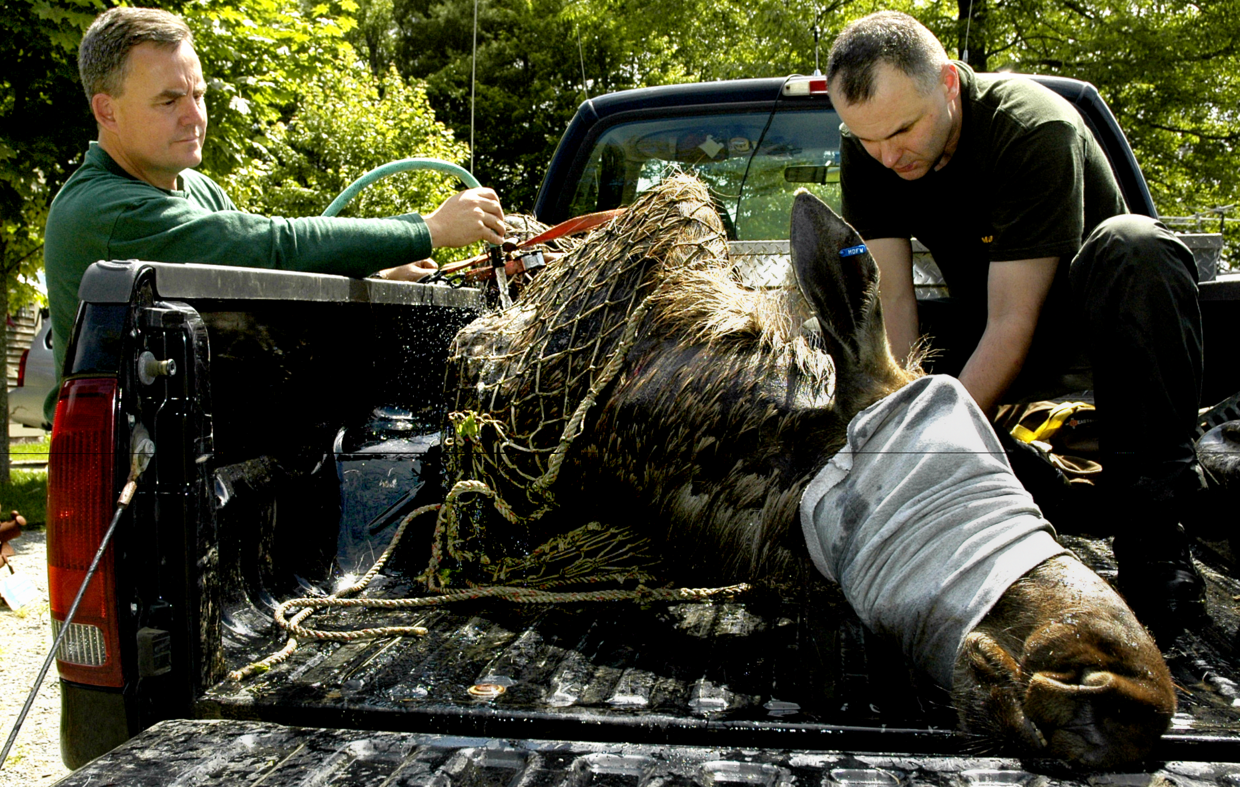MassWildlife and the Massachusetts Environmental Police formed the Large Animal Response Team (LART) for situations when large animals such as moose, bear, and deer pose a potential threat to human health or safety. They can respond when such animals wander into heavily-populated areas or onto or near heavily-used roadways. Animals are moved only if their location poses a high public safety risk, such as a vehicle collision, or if the animal has no other safe way to leave the area.
The best thing people can do is to give large animals lots of space. Avoid approaching them for a better view or a better photo, as this can often result in animals moving in an unsafe direction and creating a more stressful situation for both animals and people. LART does not relocate wildlife causing property damage or causing a "nuisance" or other issues that are unrelated to public safety. The mere presence of a moose or bear in a highly-populated area does not mean LART needs to respond. If there is nearby connecting green space, and a safe escape route, leaving the animal alone is the best course of action and most common outcome.
A written agreement between the two agencies spells out the protocols and procedures that govern LART operations. Team members are composed of MassWildlife biologists and Environmental Police officers specially trained and certified in wildlife chemical immobilization and animal handling. When deciding the best course of action to take with large animals in both suburban and urban areas, LART’s responsibility is to consider public safety and the welfare of the animal.
In large animal response situations, four main options are available:
- Monitoring: Keeping tabs on the animal from a distance is often all that is needed to allow the animal to move on. The main effort is to keep people away from the animal. This is the most common resolution in most large animal situations and does not require the presence of LART members.
- Hazing: Encouraging or “herding” the animal to go in a specific direction. LART members may be on scene and ask for local assistance if this option is chosen.
- Immobilizing and relocating: Using chemical immobilizing drugs and transporting the animal to suitable habitat may be chosen, especially if the animal can be contained in a small, confined area. LART staff will assess the circumstances and decide whether this action is appropriate. Factors under consideration include stress level of the animal, air temperature and humidity, and public safety.
- Euthanizing: The option of last resort, euthanasia is employed only when an immediate threat to public safety exists or chemical immobilization is too risky. This is an extremely rare situation, but when the public safety risk is very high, circumstances may require this difficult action to be taken.
